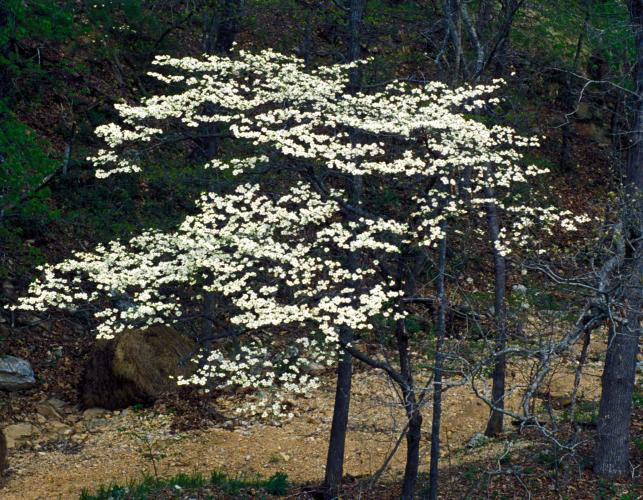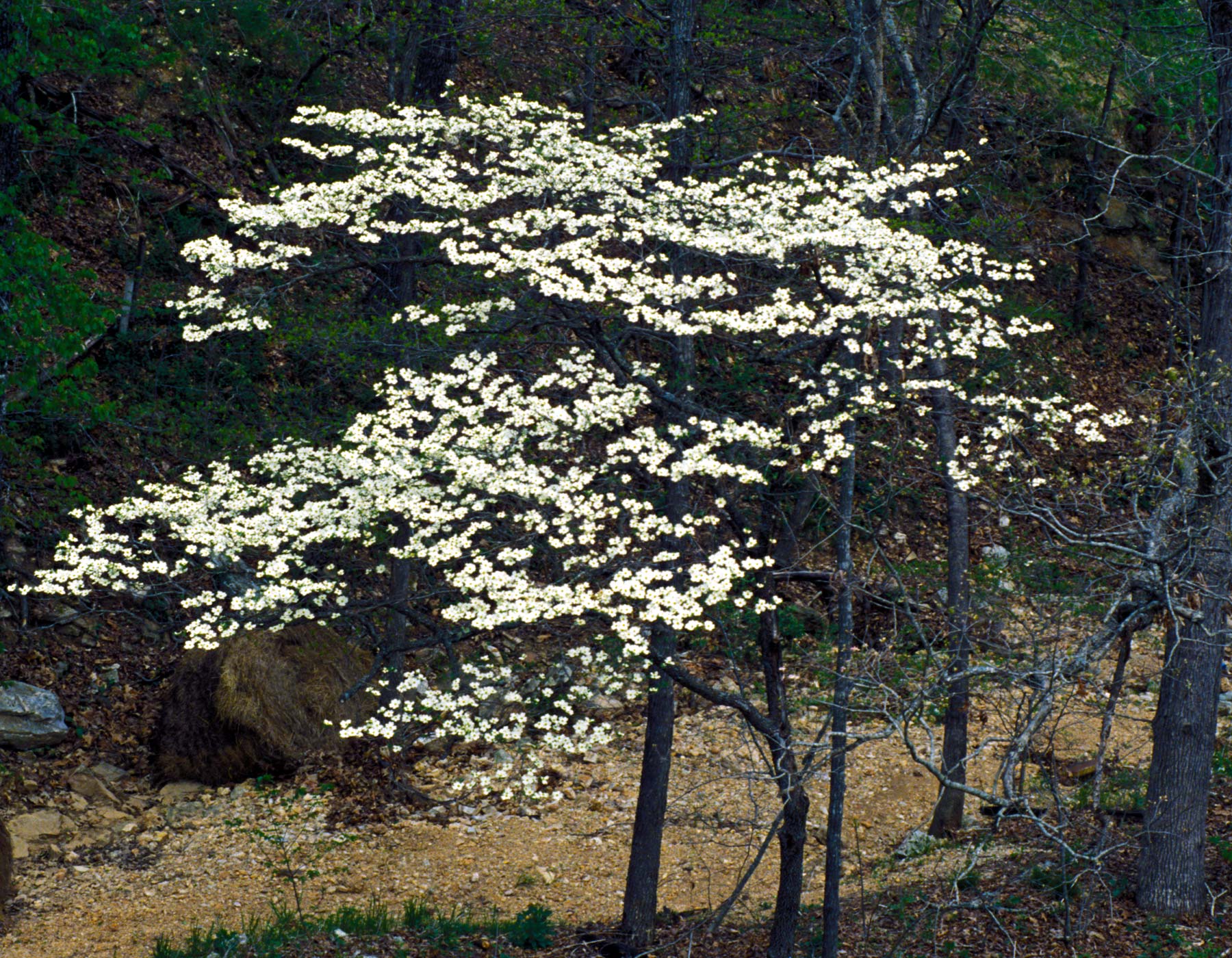
Xplor reconnects kids to nature and helps them find adventure in their own backyard. Free to residents of Missouri.


































Stay in Touch with MDC news, newsletters, events, and manage your subscription

Xplor reconnects kids to nature and helps them find adventure in their own backyard. Free to residents of Missouri.

A monthly publication about conservation in Missouri. Started in 1938, the printed magazine is free to residents of Missouri.




Brentwood, Mo. — It's the state tree of Missouri. A tree beloved by home landscapers for its diminutive size and shade tolerance. The attractive four-lobed white flowers it produces are among the first to banish winter's cold and welcome springtime. The fruit it bears feeds songbirds, turkeys and even white-tailed deer.
The flowering dogwood (Cornus florida) has always been a Show-Me-State favorite.
Now however, it's in danger.
The Missouri Department of Conservation (MDC) advises flowering dogwood owners to be on the lookout for dogwood anthracnose, a fungal disease that can be damaging and even fatal to these prized trees.
According to the Missouri Department of Agriculture (MDA), the disease first found its way into this state by hitching a ride on infected nursery stock transported here from other states. MDA believes it may have arrived in Kirkwood and established itself in the Kirkwood/Ladue area—where it remained at low levels. That is until earlier this month when the disease was also confirmed in Brentwood. Unfortunately, this means dogwood anthracnose is beginning to spread.
"It wasn't very prevalent before, but the disease likes all the wet weather we've had this year and it's starting to show its ugly head elsewhere now," said MDC Community Forester Mark Grueber.
The spores that spread the disease thrive in high humidity and ample moisture. They are carried through the air in water droplets during storms, by insects and possibly by birds. The record amount of rain experienced in the area during this past spring and summer is just the thing to encourage the spread of dogwood anthracnose. So far the disease appears to be confined to the St. Louis area; however, future expansion of dogwood anthracnose always remains a possibility.
Grueber recommends homeowners look for the following symptoms in their flowering dogwoods, especially if they live near the area where the disease has been confirmed.
If the disease remains unchecked, the tree will eventually die.
Fortunately, there is a range of fungicides that can treat dogwood anthracnose successfully, and the treatment is not overly expensive. However, Grueber cautions tree owners to make certain what they are dealing with before taking any action.
"Don't confuse dogwood anthracnose with powdery mildew, which is really bad this year. That's another condition prevalent during hot, humid weather."
Grueber said common powdery mildew symptoms include a greyish-white covering on the leaves, but none of the other signs mentioned above.
The other question tree owners need to ask is whether or not the tree is worth saving.
"Before you do any treatment, make sure it's worthwhile to treat," Grueber said. "It depends on how extensive the infection is. If it has dogwood anthracnose really bad, it could be highly stressed and have some other issues as well. It might just be beyond the point of trying to save. That's why it's really best to have a professional arborist evaluate your tree."
Grueber recommends sending photos of any suspected infection to your local MDC Forester. If the signs look right for dogwood anthracnose, they can refer tree owners to a professional arborist certified by the International Society of Arboriculture (ISA) with whom they can arrange a field visit. An arborist can confirm the presence of the disease by sending samples to a lab for analysis. If the diagnosis is positive, an ISA-certified arborist can advise regarding proper fungicide treatment.
Of course, the best treatment is always prevention. To decrease the chance of attack by the disease, Grueber recommends taking the same measures needed to keep any tree healthy. These include:
Grueber especially cautions tree owners not to expose the leaves to direct moisture when watering. Spraying the foliage of dogwoods with irrigation systems is not a good idea because it can promote spread of the disease.
"That's one of the worst things you can do," Grueber warned. "You want to redirect your irrigation heads and sprinklers to make sure they're not spraying the foliage of your dogwood."
He also suggested using a soaker hose turned upside down.
Grueber also advises prospective dogwood buyers to carefully scrutinize any trees they might consider purchasing to make sure they are healthy and have no signs of disease.
Finally, infected leaves or trees that are removed should be destroyed, not used for mulch or moved long distances, where they may be responsible for infections in other locations.
Dogwood anthracnose joins a long list of threats to our native trees. However with the appropriate preventative measures, and proper treatment if necessary, the flowering dogwood can continue to offer the beauty and satisfaction to owners that has earned its place as the State Tree of Missouri.
For more information or to find out where to send photos of suspected infections, visit mdc.mo.gov and scroll down to the "Regions" link to find a local MDC forester. A list of ISA-certified professional arborists can also be searched by location at treesaregood.org.